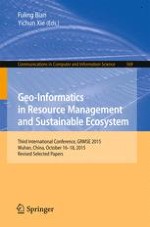2016 | OriginalPaper | Buchkapitel
Possible Influences of Land Use and Cover Change on Vegetation Cover: A Case Study in China’s Yongding River Basin
verfasst von : Hong Wang, Kaikai Xu, Xiaobing Li, Honghai Liu, Dengkai Chi
Erschienen in: Geo-Informatics in Resource Management and Sustainable Ecosystem
Verlag: Springer Berlin Heidelberg
Aktivieren Sie unsere intelligente Suche, um passende Fachinhalte oder Patente zu finden.
Wählen Sie Textabschnitte aus um mit Künstlicher Intelligenz passenden Patente zu finden. powered by
Markieren Sie Textabschnitte, um KI-gestützt weitere passende Inhalte zu finden. powered by
